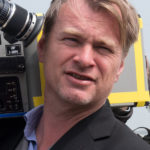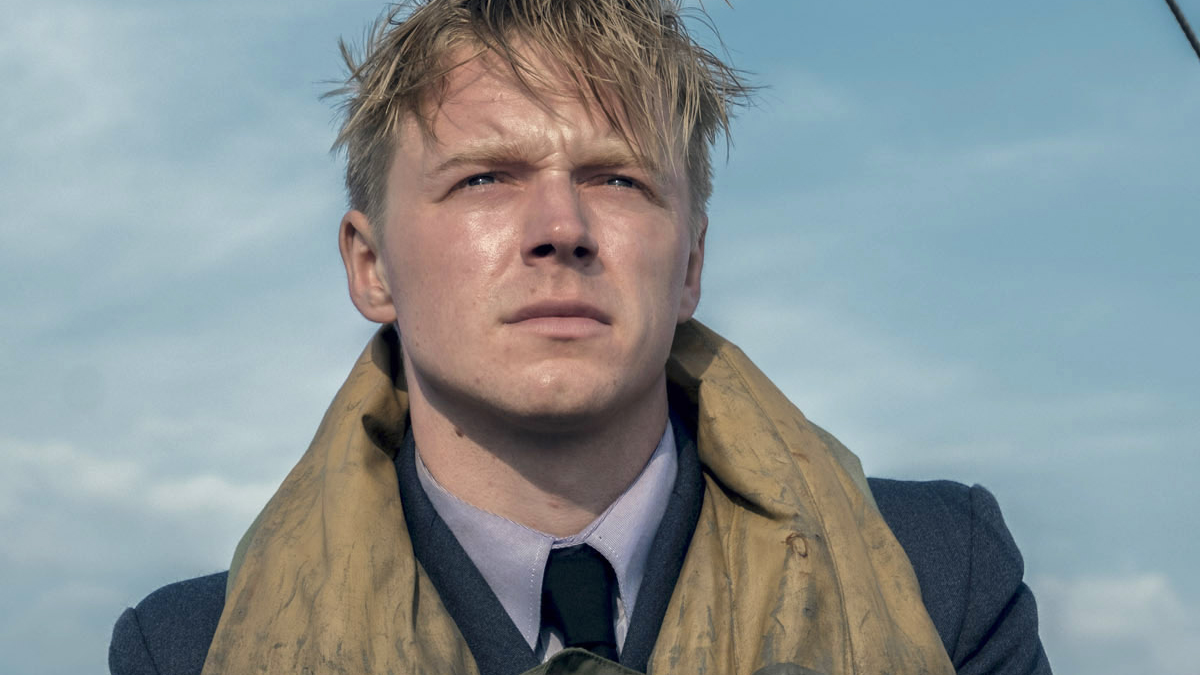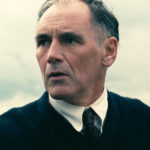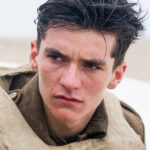Jack Lowden, 27, is a successful and award-winning actor. Prior to being cast as a Royal Air Force pilot in Christopher Nolan’s Dunkirk, Lowden performed on stage as well as in television and film projects. He spoke to Senior Editor Paraag Shukla about the film, which opens in theaters on July 21, 2017.
Chris Nolan told me that for British people, the story of Dunkirk is a massive part of the culture. How familiar were you with the story prior to coming aboard?
It’s hard to grow up in the U.K. without learning about it. We’re taught a lot about the Second World War in high school, and what you learn is specific to where you grow up. I grew up in the Scottish Borders, so I learned about the navy at Scapa Flow in the Orkney Isles. But it’s hard to escape Dunkirk, and the “Dunkirk Spirit” has become a myth over time. It was cleverly turned around into a sort of victory for propaganda.
When you were cast as Collins, what kind of research did you do for the character and the story?
I found it hugely fascinating. I didn’t know about the RAF’s involvement during Dunkirk. Obviously, the Battle of Britain was afterward and we’re told a lot about that. It was fascinating to learn that this was a proper, big test for the RAF early in the war. Even learning the age of these guys—the average age was something like 20, with the youngest being 18. The fact that they were handed these machines is quite remarkable. It does make you think—what the hell was I doing at 18 years old? Could I have been put in charge of a machine and know what to do?
Coming from the east side of Scotland, one of the few flat areas of the country, there are a lot of RAF bases up there. I grew up near RAF East Fortune, which was about 10 miles from where I lived. So we went there and to RAF Duxford, outside of London. I also learned that a great uncle of mine, Flying Officer Jimmy Ross, was an RAF pilot during the war. We don’t know if he was involved in Dunkirk; we’re still trying to find out.
I’ve done a few military things now, and one thing that never ceases to amaze me is the humor. When you meet vets, they always have this wicked sense of humor. The RAF pilots at that time were constantly crashing and many were burnt. They formed a group called The Guinea Pig Club.
We actually did a feature on them in our last issue—The Guinea Pig Club—it’s an incredible story.
Oh, wow! Yeah, they were at the forefront of skin grafting. There was one doctor who was grafting eyelids and lips and things. And the men’s constant humor was fascinating to me.
When you look at Nolan’s screenplay, which is only 76 pages, there’s not that much dialogue. A good portion of your lines were radio transmissions, like “Copy. Vector 1-2. Angels 5.” Describe what it was like to film your scenes while actually flying.
We shot a lot of footage with mounted cameras on a Yak-52, and me and a pilot went up over the actual Channel—which was incredible—with two Spitfires flying next to us. It took about 10 minutes to get out over the Channel, and with the IMAX cameras you only have a couple of minutes of reel! The pilot behind me was obviously flying the plane, but also rolling the camera and even directing to a certain extent, shouting, “they’re behind you…they’re in front of you!” We were playing around with different things. We opened the canopy at one point. It’s in the film, me actually opening the canopy while flying a few feet above the Channel.
So we had that mixed with shooting in a gimbal cockpit, which Chris himself was operating. He was standing where the nose of the plane would be, ramming this thing left and right like we’re banking, and Chris is shouting “they’re on your left…they’re on your right!” It was very old-school in many ways. We obviously had pilots there, helping out with certain things like the fuel gauges, which come into play in the story.
One thing we tried to keep as much as possible was how calm these guys had to be in these situations. Chris was keen on showing the young age of these people—boys—throughout the film. That was also my part in the air, to show a very young man trying to stay calm when he hits the water and was tested to the max. It was fascinating.
I knew Chris Nolan preferred practical effects over CGI, but one thing caught me off-guard when we spoke—I didn’t think any studio would let a director put the actors in an actual aircraft.
[Laughs] Yeah!
It makes such a difference. Audiences can always notice CGI right away. In this film, it feels real—the effects are very impressive. Did you have you learn technical details and procedures and so on?
We briefly learned about the checks they would do. Chris was very keen on keeping the pilot’s head moving, constantly scouring for 109s. During a crash scene, there was a constant check of the parachute and the “Mae West” life preserver. I learned to put everything on myself. By the end, I didn’t need anyone to help me put on the parachute, which is actually quite complicated! And running with one is quite fun. [Laughs.]
Being 6’1″, it’s hard to get in and out of a cockpit quickly. Very cramped! Not being a pilot myself, the aircraft are almost more enjoyable from the outside—seeing that silhouette and hearing that Rolls Royce engine from the ground. But I was told that back then, it was the pilots’ favorite plane to fly because of its maneuverability. I think the 109 had more speed, but the Spitfire was better on the turn.
They were quite close at that stage of the war; it often came down to the individual pilots’ skills. I imagine that with only a few minutes of film in the cameras, you must have had to go up dozens of times. What was that like?
As an actor, it was a weird experience filming, because we were on our own a lot! I told Chris it was like me and the pilot were shooting our own short film. There were at least two or three days when we were flying nonstop. We’d come down and Chris would watch the film and then tell us what he wanted. Then we’d go up again. It was quite fun.
But those Spitfires, those are remarkable to fly alongside! They were wingtip-to-wingtip, only 10-15 feet apart, and it was quite spectacular. And the fact that you were over the Channel and you could see both France and England—it really brought it home. The Brits were obviously used to fighting in mainland Europe, but it must have been bizarre to fight that close to home.
The RAF got a lot of hate from the ground forces during that week at Dunkirk, who thought the planes were hardly turning up. It was interesting to learn how the RAF had to hold back resources for the inevitable invasion.
That very thing is touched upon quite effectively in that one sequence in which a soldier dismissively asks your character, “where were you?” What surprised you most about the history and the experience of making the film?
I think I was surprised most by the men queuing on the beach in between attacks from 109s and Stukas. I find that incredible, and it really struck home for me. And again, what never ceases to amaze me whenever I do military roles is the age of the guys.
Another thing with the RAF boys—they really knew how to dress. They still do. They had these beautiful lined black boots. And the idea of wearing a tie to go to war! Incredible.
We often talk about heavy subject matter, so we’d like to end on a lighter note with a creative question. If it was 1940 and you had to join a military branch, which would you choose?
I’m going to have to say the RAF. During the filming, I really did enjoy being on the water a lot. My grandfather was in the navy, in the radar room of a corvette, HMS Geranium. He was mentioned-in-dispatches, but again, we don’t know for what.
But I’d have to choose the RAF, to be at the forefront of the advances in technology. a lot of pilots were originally weekend sportsmen, and many from the upper classes. The upper classes often get first dibs on things, so I can see why they would have jumped at an opportunity to join the RAF. And again, their humor is relentless. It’s remarkable—and admirable as well.
Well, flying like you got to do, chasing a Messerschmitt 109 in a dogfight—that’s quite an experience that a lot of people would kill for.
Oh, it’s not lost on me how lucky I was to do that. [Laughs.] I just had to remember that I was there to act, and not just to gawk! ✯
Film Recon is a web series by Paraag Shukla, Senior Editor of World War II and Aviation History magazines at HistoryNet.
Dunkirk opens in theaters on July 21, 2017.
Check out our other Film Recon interviews for Dunkirk:
Christopher Nolan — Director, Writer








